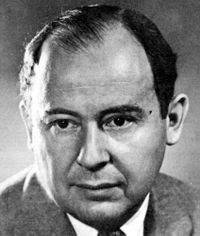
Exam 1 Review
CptS 260 - Intro to Computer Architecture
Washington State University
CptS 260 - Intro to Computer Architecture
Washington State University
Exam 1 Review
- Comer Ch. 2: Gates and Circuits
- and, or, not, nand, nor, and xor gates. Gate symbols, functions, truth tables.
- equivalence of gate circuits, truth tables, and boolean formulas
- difference between combinatorial and sequential logic
- function of demultiplexor and counter
- Comer Ch. 3 and Britton Ch. 3: Numbers
- Binary, hex, and octal representations
- 2's complement representation; 10's complement representation; conversion from decimal to 2's complement representation
- Operations on 2's and 10's complement numbers (I won't ask you to multiply or divide in base 8 or base 16 but you should know what issues arise w.r.t. word size for these operations; multiplication in base 2 is fair game)
- Floating point representation
- Comer Ch. 4-6 and Britton Ch. 1: Processor components
- General and special purpose registers
- Program counter/instruction pointer
- ALU and control logic
- Properties distinguishing RISC and CISC processors
- Instruction formats (general from Comer, MIPS specific from Britton)
- Pipelines along with issues such as stalls
- Fetch-execute cycle
- Addressing modes: register, register indirect, memory indirect
- Difference between lw, la, li instructions
- Comer Ch 7
- Processor modes
- Microcode - horizontal and vertical; advantages and disadvantages of microcoded processors
- Britton Ch. 2
- Register usage conventions; caller save; callee save
- Transalation of if-then-else, while and other loops, switch
- Assemble directives: text and data segments, initialized data, symbolic addresses
- Advantages and disadvantages of assembler programming